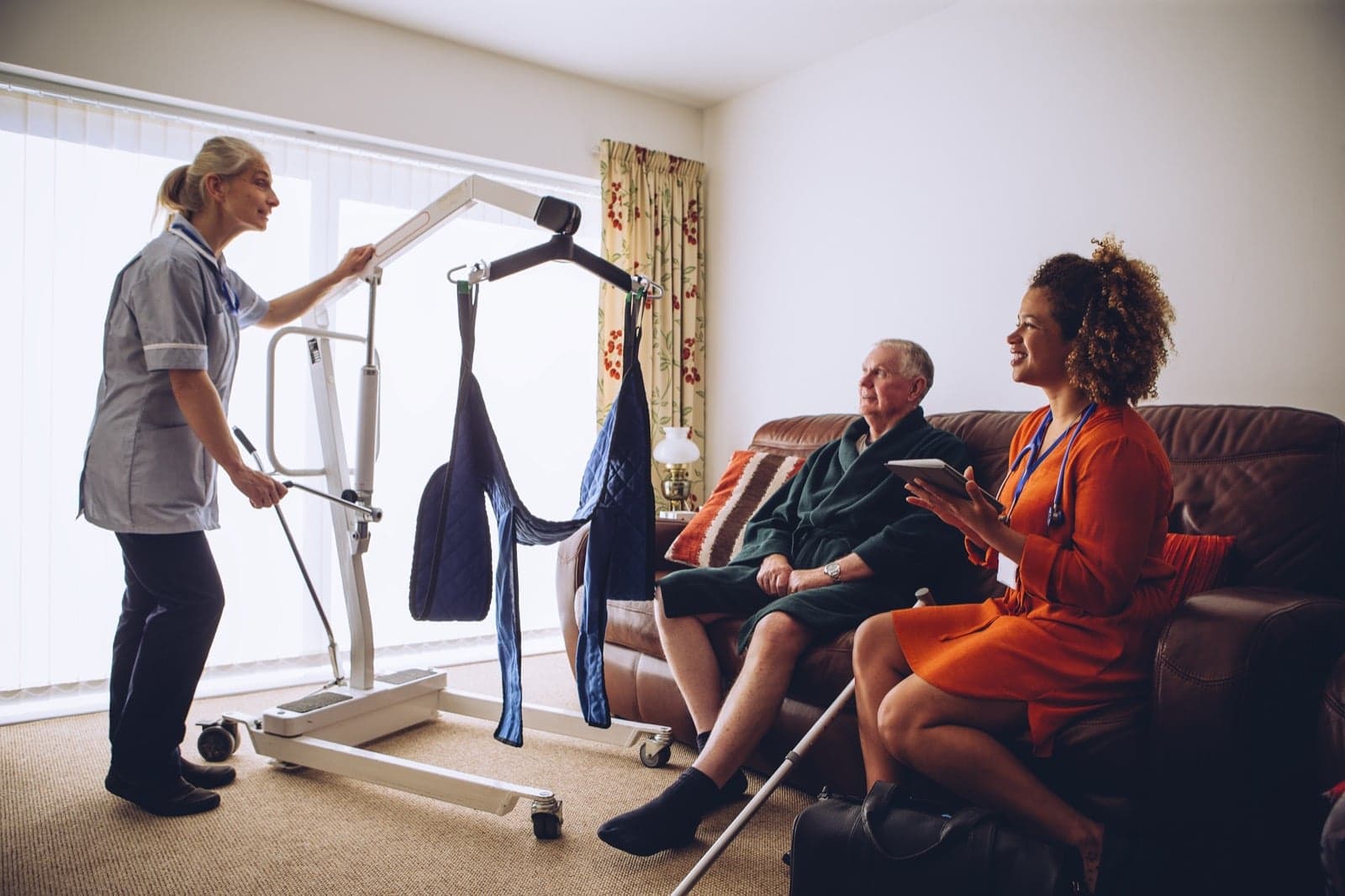In a world where efficiency and productivity are often the buzzwords that drive corporate agendas, it's easy to overlook the human element that forms the backbone of any organization. Employees, the lifeblood of a company, are often subjected to tasks that involve moving and handling—be it boxes of supplies, machinery, or even patients in a healthcare setting. While these tasks may seem mundane, they hold the potential for severe repercussions if not executed correctly. We're talking about musculoskeletal disorders, chronic back pain, and a host of other injuries that can not only incapacitate your workforce but also lead to costly legal battles and tarnish your company's reputation. This is where the People Moving and Handling Train the Trainer Program comes into the picture as a knight in shining armor.
But why should you, as a decision-maker in your organization, invest time and resources into such a program? The answer is multi-faceted, touching upon legal obligations, ethical considerations, and the undeniable benefits that come with a well-trained team. This article aims to delve deep into the intricacies of the People Moving and Handling Train the Trainer Program, offering insights into its structure, benefits, and implementation strategies. We'll also explore real-world case studies to demonstrate its efficacy across various sectors. So, buckle up as we embark on this enlightening journey that promises to change the way you view workplace safety and employee training.
The Anatomy of an Effective Training Program
Core Components: An effective training program is more than just a series of PowerPoint slides. It's a well-thought-out curriculum that includes theoretical knowledge, practical exercises, and real-world simulations. The core components should cover the basics of ergonomics, the importance of proper lifting techniques, and the use of specialized equipment.
Customization and Flexibility: No two workplaces are the same, and your training program should reflect that. Customization allows you to address the specific needs and challenges of your work environment. A flexible training schedule ensures that all team members can participate without disrupting their regular duties.
Evaluation Metrics: How do you know if your training program is effective? Through evaluation metrics. These can range from quizzes and practical tests to employee feedback and injury rates. Regular evaluations help you fine-tune the program for maximum effectiveness.
Why Choose a Train the Trainer Model?
Cost-Effectiveness: Training programs can be expensive, especially when you have to hire external consultants. The Train the Trainer model allows you to have an in-house expert, thereby reducing long-term costs.
Scalability: As your business grows, so does your team. An in-house trainer ensures that new employees are quickly brought up to speed, maintaining a consistent level of expertise across the board.
Ensuring Consistency: Having multiple trainers can lead to inconsistencies in the training material. An in-house trainer ensures that everyone is on the same page, creating a unified approach to people moving and handling.
Key Elements of People Moving and Handling
Risk Assessment: Before you can train your team, you need to know what you're up against. A thorough risk assessment identifies potential hazards and helps you prioritize training topics.
Proper Techniques: From lifting and carrying to pushing and pulling, proper techniques are the backbone of safe people moving and handling. Your training program should cover these in detail.
Equipment Use: Specialized equipment can make the job easier and safer. However, improper use can lead to accidents. Training should include the correct use of equipment like hoists, trolleys, and conveyor belts.
Implementing the Program
Initial Steps: The first step in implementing the program is to identify potential trainers within your organization. These individuals should possess both the technical knowledge and the soft skills required for effective training.
Training Sessions: Once your trainers are ready, it's time to roll out the program. This involves a series of training sessions, each focusing on a specific aspect of people moving and handling.
Monitoring and Feedback: Training doesn't end when the session is over. Regular monitoring and feedback are crucial for continuous improvement.
Real-world Case Studies
Healthcare Sector: In a hospital setting, improper handling can lead to patient injuries. A well-implemented training program can significantly reduce these risks.
Manufacturing Sector: In a factory, heavy lifting is part of the job. Proper training can prevent back injuries, one of the most common workplace ailments.
Retail Sector: Even in a retail environment, employees need to move and handle goods. Training ensures that this is done safely and efficiently.
The ROI of Effective Training
Reduced Injuries: The most immediate benefit of effective training is a reduction in workplace injuries, leading to lower medical and legal costs.
Increased Productivity: A well-trained team is a productive team. Proper techniques make the job easier and more efficient, leading to increased productivity.
Employee Satisfaction: Employees appreciate a safe work environment. Effective training leads to higher job satisfaction, reducing turnover rates.
Common Pitfalls and How to Avoid Them
Inadequate Training Material: One of the most common pitfalls is inadequate training material. Ensure that your program is comprehensive and up-to-date.
Lack of Follow-up: Training is an ongoing process. Regular follow-ups ensure that the material is fresh in the minds of your team.
Ignoring Feedback: Your team is your best source of feedback. Ignoring their input can lead to an ineffective program.
Conclusion: Summary and Next Steps
As we reach the end of this comprehensive guide, it's crucial to take a moment to reflect on the transformative power of effective training. The People Moving and Handling Train the Trainer Program is not just a set of guidelines or a series of lectures. It's a paradigm shift in how we approach workplace safety and employee well-being. It's about empowering individuals to become ambassadors of best practices, thereby creating a ripple effect that permeates through the entire organizational structure. It's about fostering a culture where safety is not just the responsibility of a designated department but the collective duty of every team member.
The benefits of implementing such a program are manifold. From a tangible reduction in workplace injuries to the intangible yet invaluable increase in employee morale and job satisfaction, the returns on this investment are both immediate and long-lasting. Moreover, in a world where consumer consciousness is on the rise, a company's commitment to employee well-being is often seen as a reflection of its broader ethical stance, thereby influencing public perception and brand value.


Comments
Post a Comment